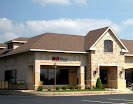 Looking out over a patch of prairie bordered by Interstate 55, an overpass and an on-ramp, Dean Campbell still can see how Illinois once looked.
Looking out over a patch of prairie bordered by Interstate 55, an overpass and an on-ramp, Dean Campbell still can see how Illinois once looked.“I’m trying to picture Abraham Lincoln riding through this stuff on horseback,” he said, standing amid the wild bergamot, gray-headed coneflower, blazing star, compass plants and big bluestem grass. “He’d be about eye-level with some of these plants.”
Campbell started work on this I-55 interchange prairie about five years ago — about the same time former first lady Patti Balgojevich instituted a roadside wildflower planting initiative — nursing transplants and hand-carrying thousands of gallons of water. The idea was to bring back a little bit of the landscape of Lincoln’s time to coincide with the bicentennial celebration of the 16th president’s birth this summer.
He got permission from the Illinois Department of Transportation to “beautify” the interchange, and off to work he went, planting 110 different species of flowering plants. Sixty-five of them have survived.
“I’m pretty satisfied with the prairie’s progress and with the prospect of the individual plants starting to spread out on their own,” he said.
Campbell has been restoring “Freedom Prairie” on the northeast corner of the I-55-Toronto Road interchange so that thousands of passing motorists can watch the restoration take shape
Early settlers found central Illinois to be mostly prairie. Timber was restricted to floodplains, stream corridors and occasional oak groves.
Lincoln spent weeks at a time away from home, traveling on horseback or by carriage across this landscape as he rode the Eighth Judicial Circuit between county seats. During Lincoln’s years in Springfield — from 1837 to 1861 — the prairie was rapidly being converted from wilderness to farmland.
When John Deere developed a marketable steel plow in his Grand Detour blacksmith shop in 1837 – the year Lincoln moved from New Salem to Springfield -- the race was on to break the prairie sod and unlock the best soil in the world.
Campbell isn’t the only one celebrating the link between Illinois’ cultural and natural history. The Illinois State Museum is featuring an exhibit called “From Humble Beginnings: Lincoln’s Illinois from 1830-1861.”
The exhibit traces Illinois’ transformation from “a frontier region to a powerful state” thanks to rapid improvements in agriculture, transportation and industry. One of John Deere’s plows is on display. The exhibition runs through January 2010.
The Abraham Lincoln Presidential Museum also has a related special exhibit -- "How Vast and How Varied a Field: The Agricultural Vision of Abraham Lincoln." It features the first John Deere tractor and will remain at the museum until Aug. 31, 2010.
Campbell is retired from the Illinois Department of Conservation — forerunner of the Illinois Department of Natural Resources — where he served as superintendent of the conservation education division. He also worked for the Forest Preserve District of Cook County and has been a tour guide at the Capitol for the past 11 years.
Campbell has endured setbacks, such as the invasion of crown vetch, a non-native plant commonly found along roadsides. He’s also in competition with animals that chew off tender new trees and plants.
To battle crown vetch, Campbell has sprayed it with herbicide and mowed some sections of the prairie, leaving islands of prairie flowers and grasses.
Despite the hard work and elbow grease it has taken to bring back the prairie, Campbell is undeterred.
“It took 200 years for us to get rid of the prairies, and in just five years I’ve got it this far back,” he said.

Chris Young can be reached at 788-1528.
SJR

No comments:
Post a Comment